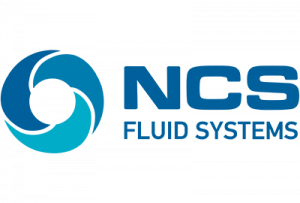This is Part Two of a Three Part Series
Read Part One Here – Temporary Diversion Methods – NCS Fluid Systems [PART 1 of 3]
Design and Installation
NCS Fluid Handling Systems design engineering determine if a diversion is appropriate based on appropriate uses and design considerations stated earlier. As noted, in some cases, constructing a project under wet conditions is preferable to constructing a temporary diversion to create dry conditions, especially if construction of the temporary diversion will require a significant amount of disturbance relative to the overall project.
Other activities that NCS designers consider are:
Determine project duration.
- “Long duration” projects are projects that last longer than three months and in many cases, are Capital Improvement Projects or traditional land development projects.
- “Short duration” projects are projects that are completed within one month or less and generally are associated with maintenance and repair activities.
- “Interim duration” projects are projects that will last longer than one month but up to three months.
Determine the time of year in which construction will occur.
NCS designers work very close with the clients team to gather necessary temporary diversion sizing parameters that may include tributary area, imperviousness, project duration safety factor, and seasonal sizing coefficient.
Apply applicable sizing methodology and perform necessary calculations (provided following this section). Use engineering judgment to determine if the temporary diversion design flow is adequate for the specific project.
Determine appropriate method of diversion. Options may include the following:
Channel Diversion – For smaller streams, construction of dams and detention basins, or as the site allows, a channel diversion may divert the entire waterway.
Pumped Diversion – A pumped diversion may be appropriate for short duration projects with low baseflows. It may also be the only option where space for the diversion is limited.
Berm or Coffer Dam – A berm or coffer dam is appropriate for streams of all sizes to confine flow to one side of the stream.
Piped Diversion – A bypass pipe is generally appropriate for short duration projects with low baseflows.
The system designers at NCS can be contacted to discuss the various options with the clients design team and it is recommended in all cases to follow the design steps that is laid out in the project plan for the selected method.
Channel Diversion, a plan may offer such valuable information:
- Use sizing methodology to determine temporary diversion design flow rate.
- Determine channel slope based on existing and proposed site conditions. Determine maximum permissible velocities based on lining material. Pay attention to diversion channel entrance, bends, transitions and downstream return to stream where scour forces may require greater protection. Because temporary diversion channels typically are not in service long enough to establish adequate vegetative lining, they must be designed to be stable for the design flow with the channel shear stress less than the critical tractive shear stress for the channel lining material.
- Determine the channel geometry and check the capacity.
- Determine depth of flow. Provide a minimum of 0.5 feet of freeboard above the design water surface elevation.
Pumped Diversion
- Use sizing methodology to determine temporary diversion design flow rate.
- A backup pump (or pumps) with capacity equal to or greater than the diversion design flow rate should be on site and in good working order always.
Berm or Coffer Dam
For coffer dams or berms that are intended to isolate a portion of the stream from the work area steps 1- 4 should be applied to the “wet” side of the coffer dam or berm.
- Use sizing methodology to determine temporary diversion design flow rate.
- Determine channel slope based on existing and proposed site conditions.
- Perform initial channel sizing calculations. Determine maximum permissible velocities based on lining material. Because temporary diversion measures typically are not in service long enough to establish adequate vegetative lining, they must be designed to be stable for the design flow with the channel shear stress less than the critical tractive shear stress for the channel lining material. This stability criterion applies to the stream-side of berms when berms are used to isolate a work area within a stream
- Determine the channel geometry and check the capacity
Piped Diversion
- Use sizing methodology to determine temporary diversion design flow rate.
- Size the pipe to accommodate the design flow using no more than 80 percent of the pipe full flow capacity.
| Owen Gilbert, MBA President and CEO 780-910-7951 ogilbert@ncsmanagement.ca |
Kamal Singh PE, Peng. MBA VP Engineering 604 720 0190 ksingh@ncsfluidsystems.ca |
|---|
Share This:





 CDN NEWS |
CDN NEWS |  US NEWS
US NEWS 































